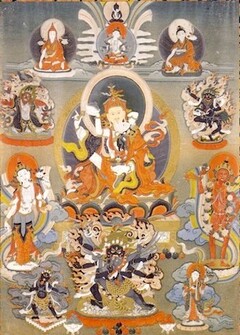Longchen Nyingtik Series
English (58) | Deutsch (4) | Español (3) | Français (9) | Português (3) | 中文 (6) | བོད་ཡིག (58)
Texts related to the Longchen Nyingtik (klong chen snying thig, Heart-Essence of the Vast Expanse) cycle revealed by Rigdzin Jigme Lingpa (1729/30–1798):
